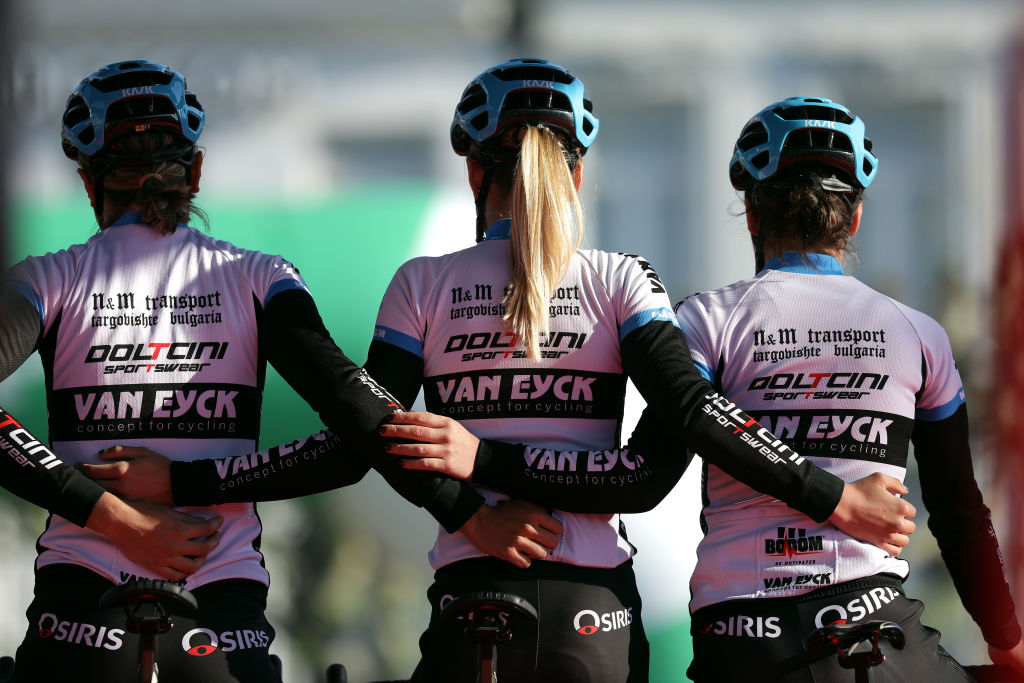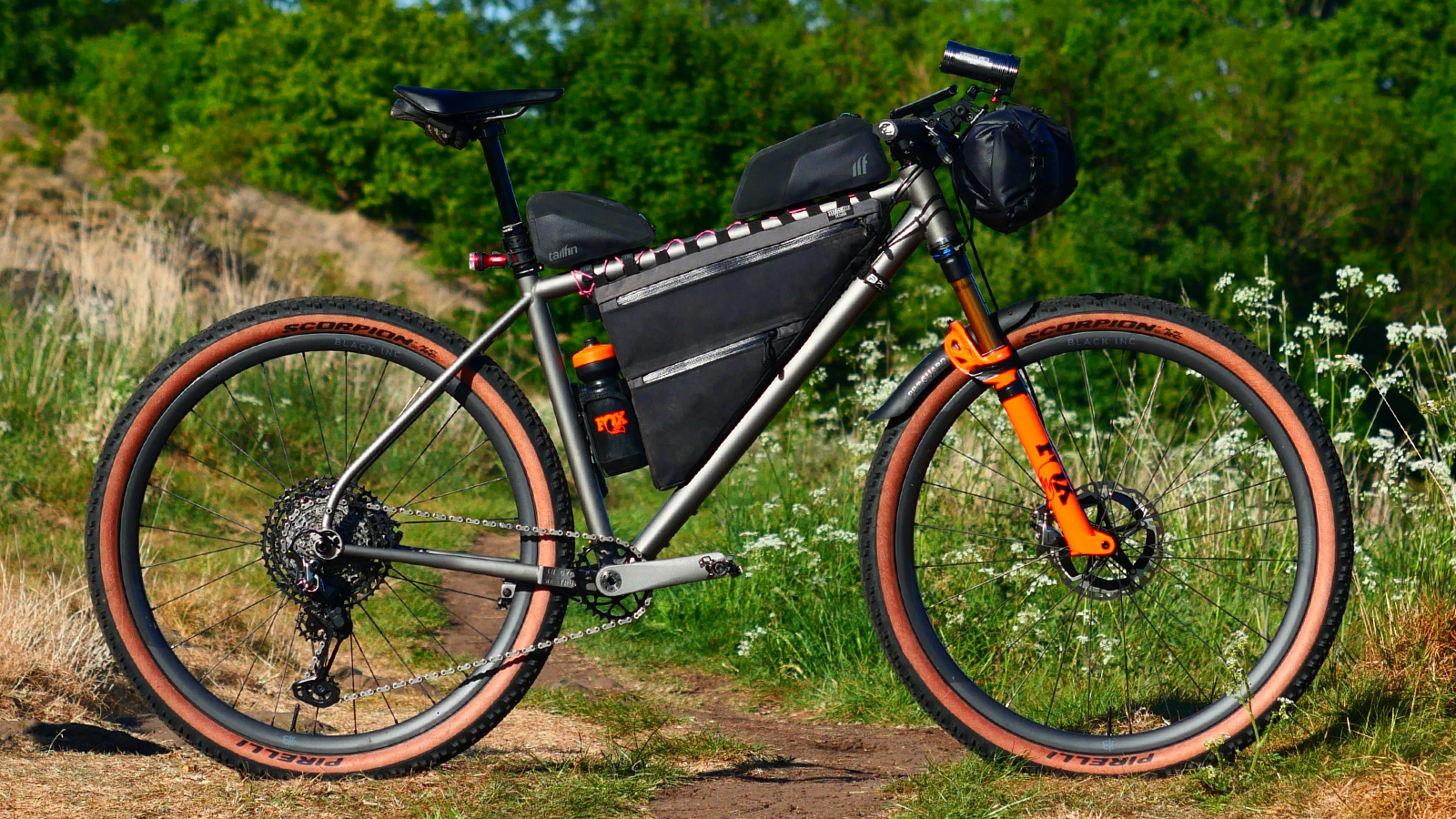Philippa York: Bikinigate and the worrying attitudes toward female riders
'The circumstances of what happened in Sicot's and Virenque's cases are complex and very different'

The Marion Sicot doping case is a sorry enough story, and one of a young athlete making the wrong choice. It’s something that we’ve seen before in the sport, many times, and it’s more than likely an episode that will repeat itself again and again.
However, the statement put out by her former team, Doltcini-Van Eyck, highlights not only the pressures to perform but other much more worrying attitudes towards female riders altogether.
As a parent, I read the story of the team's Directeur Sportif Marc Bracke requesting photos of young women in bikinis and was horrified that this has been justified behind the pretense of checking body fat levels. What was more worrying was that according to the team statement this was considered normal behaviour in the past. That their argument also consisted of the notion that people knew of this practice left me with my head in my hands.
It goes without saying that coming forward to address these issues and speaking out is an incredibly difficult task. It takes guts and untold amount of determination and resilience but I find it staggering that such a practice happened in women's cycling teams and, although two riders have now filed complaints, no-one at the team management level thought to question it.
Did none of those who knew or who this was reported to not have a daughter, sister, niece, girlfriend or female acquaintance?
Doltcini-Van Eyck accuse Sicot of exploiting 'MeToo' movement to justify doping
Pauline Ferrand-Prévot: Something unsettles me about the revelations from Marion Sicot
Marion Sicot admits using EPO, alleges abuse at Doltcini-Van Eyck
UCI opens investigation into allegations of sexual abuse at Doltcini-Van Eyck Sport
Marion Sicot says menstrual cycle could have sparked EPO positive
Did no one ever think that something so abhorrent was fundamentally wrong when an older man in a position of power was asking for photos of young women in bikinis or underwear?
Taking away the idiocy that anyone can pretend to conduct a skin fold assessment from a photo, there's also the considerations over protection and exploitation. Remember, this involves the exposure to creepy manipulation because the victims have been asked to keep the whole thing a secret. They’re asked to consider the sharing of photos as a matter of trust and at that point it's well on the road to becoming grooming, pure and simple.
The latest race content, interviews, features, reviews and expert buying guides, direct to your inbox!
Reading through the team statement I thought for a moment that they were going to trot out the old excuse, saying that the person asking for images had been involved in bike racing all their life, as if that was a guarantee of their integrity, but instead they turned the whole thing around and it has become victim blaming against Sicot.
The correct response would have been for the team to write a carefully worded reply saying they were looking for dialogue between those involved, and that they couldn't say anything until the authorities had completed their investigations. They should have added that they took their responsibilities very seriously.
That would have been the normal thing to do. Instead, they chose to blame the alleged victims. It's a pretty low thing to say Sicot was trying to hide behind her doping with a MeToo hashtag when this seems to be so much more complicated than that.
Anyone looking at this affair from the outside with a bit of perspective can see what the photos really are – exploitation of a young vulnerable female and a free piece of voyeurism that firmly establishes the rider/director relationship. The photos establish the basis of the relationship – one that makes it clear that as long as the rider complies – and is pretty enough – then they can be on the team. That dynamic takes away the real criteria for selection, which should be based around fitness and talent.
What a message to send, and even worse what a disgusting one to receive.
We are learning from the stories coming out following the MeToo movement that scandals like these are not isolated incidents. Victim blaming that has been mooted as some kind of defense has shown a sorry inability to accept that such behaviour is abhorrent and yet Doltcini-Van Eyck's attack on Marion Sicot seemingly follows the same script.
They argue that this wasn’t fault, she didn't have to do it, and it was something that people knew happened.
The clue here is the use of "was". It wasn't acceptable then and mainly because there was no means of reporting or being taken seriously if you did complain such abuse of position continued. Those days are over.
Times have thankfully changed and women's cycling is moving to a parity with the men which means that everyone involved in that has to become more professional, have more respect and treat their riders well.
We already see steady progress toward equity in certain events like the Women's Tour in the UK in terms of the promotion and organisation many events are now moving toward ensuring the same investment. The Women’s Tour, as an example, has equal prize money with the men’s race. That's the future for everyone, not the exception.
I was heartened to have listened to Bob Varney of Drops Cycling talk about his team and how he didn't see his riders as anything other than riders. That they were female wasn't an issue, it wasn't why he ran the team, he ran it because he wanted to have a bike team and that the riders were female was irrelevant.
However, then he told the story of the last time they went to the Omloop Het Nieuwsblad. While the speaker introduced the teams before the women's race, he asked the riders about their connections with male cyclists; father, brother, boyfriend, partner, cousin, nephew, or whatever. The speaker did not ask the riders about their thoughts on form, chances of winning or how they saw the race unfolding. Only the male connection mattered. He even asked a rider about her boyfriend in motor racing, as if that was more important than the female athlete in front of him. It was as if the women riders only had some kind of validity through a male connection, tenuous or otherwise.
Belgium may have reduced the use of podium girls during post-race ceremonies but it's obvious that there's still some attitudes that require changing so that they understand the idea that racing is basically just racing and women's events can be equally exciting, interesting and entertaining as the men.
Another thing that sprung out of the Sicot story were the comments made by Pauline Ferrand-Prévot comparing her compatriot to the infamous Richard Virenque. I'm not quite sure how she arrived at that comparison but I think it's only fair to point out that the circumstances of what happened in each case are complex and very different.
Virenque's cheating meant fame and fortune awaited. Mix in his own vanity and ambition with a team that was willing to help him by means of performance enhancement, and you had a perfect combination. One that saw him go from darling of the French to a person of ridicule as a result of the Festina Affair, but only after he had blamed everyone around him and continuously denied his involvement. Finally, even after the judicial system wrung the truth out of him, he still came back as if nothing had happened.
That's probably not going to happen to Marion Sicot. Despite initially lying about doping, she went on to quickly admit to it and did not blame anyone else for her actions. She did ask for a lesser sanction, owing to what Bracke said and did. However, the fact she has explained some of the reasons on why she doped so is something Virenque never did.
You're left with the impression that Sicot didn't dope to win races, to be famous or get rich. But rather, because she felt that if she doped and became a slightly better rider then her Directeur Sportif might not have asked her for dubious photos and left her to be a cyclist without anything to hide. It's a sad conclusion, and if true, requires sympathy not condemnation.
Philippa York is a long-standing Cyclingnews contributor, providing expert racing analysis. As one of the early British racers to take the plunge and relocate to France with the famed ACBB club in the 1980's, she was the inspiration for a generation of racing cyclists – and cycling fans – from the UK.
The Glaswegian gained a contract with Peugeot in 1980, making her Tour de France debut in 1983 and taking a solo win in Bagnères-de-Luchon in the Pyrenees, the mountain range which would prove a happy hunting ground throughout her Tour career.
The following year's race would prove to be one of her finest seasons, becoming the first rider from the UK to win the polka dot jersey at the Tour, whilst also becoming Britain's highest-ever placed GC finisher with 4th spot.
She finished runner-up at the Vuelta a España in 1985 and 1986, to Pedro Delgado and Álvaro Pino respectively, and at the Giro d'Italia in 1987. Stage race victories include the Volta a Catalunya (1985), Tour of Britain (1989) and Critérium du Dauphiné Libéré (1990). York retired from professional cycling as reigning British champion following the collapse of Le Groupement in 1995.

